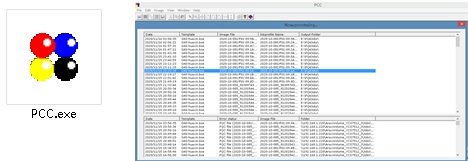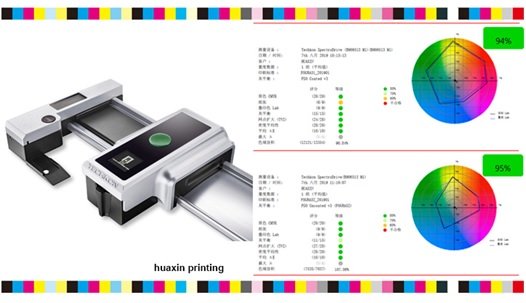CIP3/4 is a computer-controlled system integrating pre-press direct plate making machine, digital proofing machine and other equipment connected with the printing machine through the network. The system replaces the original printing process by managing the printing with data, so that the machine can print under the normal linearization standard. Data-based and standardized management achieves high quality, high yield and low cost. CIP4 is based on CIP3 adding many more comprehensive information by collecting, tracking and analyzing instructions for ink printing Lab value for different editions in printing. The first three-P’s of Prepress, Press, Postpress, plus the fourth P of Data Processing, become the new components of CIP4. It can hold more new work instructions and regulations, and the XML language can also be used across multiple platforms.


Generation of Pre-Release Data
To pre-release the ink before starting the printing machine, it is necessary to process the large-format files before printing and transfer them to the corresponding conversion software. Then the data will be transferred to the printing machine operating system. However, the amount of ink zones per color of the printing press is not the same for every equipment manufacturer. Our company has Heidelberg offset printing machine conversion software —— Prinect Prepress Interface and Komori offset printing machine conversion software —— PCC Operation Manual. It can be calculated from the large version of the PDF file, or from the 1-bit Tiff file generated by the post-RIP imposition. In order to achieve the purpose of data exchange, it must be written in a common format. The most common format is the PDF file format formulated by CIP3, or the PDF file format of CIP4. Most of these standard formats can be obtained by RIP, and most of them can accept 1-bit Tiff or PDF large version data files in terms of using interfaces.

Transmission of pre-release data
Even with the pre-ink data, it is not possible to directly control the ink keys of the printer. The PPF file records the dot area ratio of each ink area, but it is impossible to achieve the same effect printed by different manufacturers’ presses. The data on the PPF file obtained from the large version file is relatively fixed for the press of the same model. After the ink pre-release data is transmitted to the control machine of the printing press, it must be adjusted by the ink release curve of the printing press operating system to ensure that the pre-adjusted ink volume of the ink key can achieve the desired effect.
Stable ink control method
Even the pre-release ink curve is set, the ideal concentration value cannot be achieved because of many other factor. For example, the structure of the printing machine’s own ink circuit, the characteristics of the ink, the distribution of graphics and text on the layout, and the speed of the printing machine. Therefore, various methods must be used to achieve stable and accurate ink control.
1. Subjective visual method.
This method is subjective to the observation by human eyes, but not guaranteed fast and accurate. Because human eyes are the most sensitive but also easy to get fatigue, it is necessary to take care of the ink keys on the four color plates at the same time. With 32 ink keys per unit, there are 128 ink keys to be adjusted. Although not every single ink key needs to be adjusted, the workload is still very large, and the judgment and experience of each operator is not the same, which often causes quality instability.
2. Instrumental measurement method.
With this method, the operators usually use a densitometer or spectrophotometer to scan the color block on the printed sheets. By doing so, they will know which color plate(s) and which ink key(s) need to be adjusted, and then send this information to the stepping motor on the ink key to adjust the ink discharge. Right now, Huaxin Printing is the most advanced Techon SpectroDrive scanner with PressSIGN scoring software to detect whether or not the indicators meet the standards or customer requirements.





